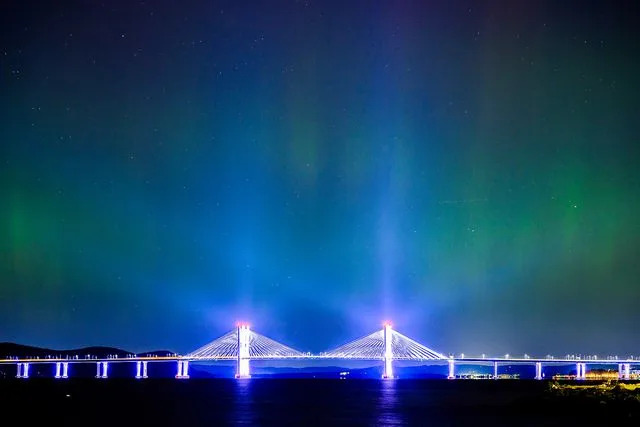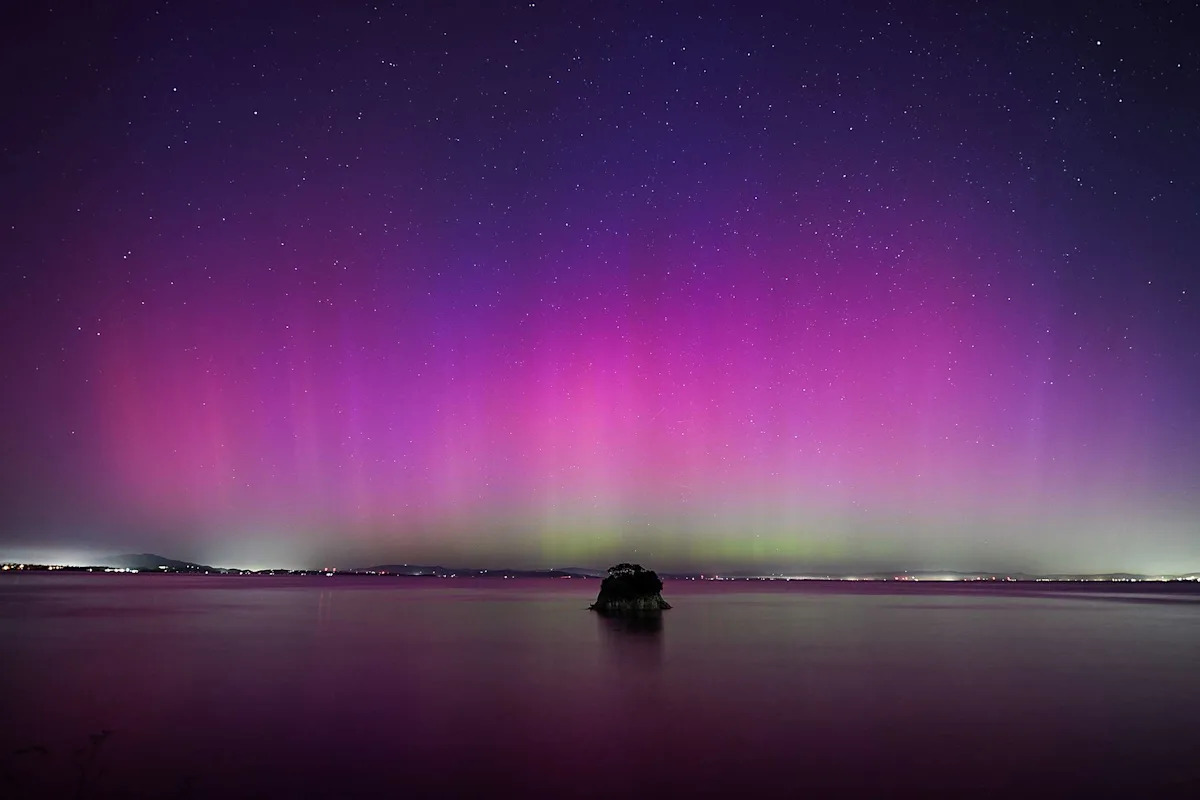NEED TO KNOW
-
The northern lights will be active on Friday, Aug. 1, according to the National Oceanic and Atmospheric Administration (NOAA)’s forecast
-
The rare, colorful display is expected to be visible from Earth in select location across the United States
-
The northern lights have a three on the Kp-index that ranges from zero to nine, which means the auroras can be “quite pleasing to look at” under perfect conditions
The cosmos are sizzling this August!
The month is starting off strong with another round of northern lights, expected to color the night sky across several parts of the United States on Friday, Aug. 1, according to the National Oceanic and Atmospheric Administration (NOAA)’s forecast.
The astronomical event, also known as the aurora borealis, is forecast a three on the Kp-index that ranges from zero to nine. This means that the display can be “quite pleasing to look at” under perfect conditions.
Those who reside in the northernmost areas of the U.S. have greater chances at catching a glimpse of the display if the weather aligns, meaning no clouds or rain that could hinder visibility from Earth. It’s important to avoid light pollution, too, which could drown out the vibrant hues.
Artificial light pollution aside, like city lights, the moon’s glow could also negatively impact the auroras. Fortunately, this month’s full moon — nicknamed the Sturgeon Moon — doesn’t peak until Aug. 9, so it’s currently only 49% illuminated as it’s amid its waxing crescent phase.
The chance to watch the northern lights from several parts of the U.S. is a rare phenomenon, however, there’s many many opportunities across the country in the last year alone. Most recently, NOAA’s forecast predicted visibility for northern areas on July 30.
Now, read on for how to watch the northern lights tonight!
When will the northern lights be visible?
Ross Harried/NurPhoto via Getty
Northern Lights
The northern lights are expected to be visible on Friday evening, according to the National Oceanic and Atmospheric Administration (NOAA)’s forecast.
For the best chances at spotting them, cast your eyes to the sky in the hours before and after midnight, specifically between 10 p.m. and 2 a.m. local time. Note, it’s impossible to view the auroras during daylight hours — so darkest is best!
Since the northern lights have a three on the Kp-index, the auroras will move further away from the poles and have the potential to be “quite pleasing to look at” under perfect conditions.
Where will the northern lights be visible?
Skywatchers who live in the northernmost areas of the country have the best chances at viewing the colorful display from Earth tonight.
Locations include Alaska, the northeastern tip of Washington, northern Idaho, northern Montana, most of North Dakota, Minnesota and northern Wisconsin. (Be sure to check NOAA’s aurora forecast for the most accurate updates throughout the night.)
How to watch the northern lights?

Roy Rochlin/Getty
Northern Lights
The best part about the northern lights is that no advanced technology is necessary to spot them from Earth. Simply all that’s needed is the naked eye, a dark viewpoint and a state that’s in NOAA’s predicted aurora viewline.
Then, all sky gazers have to do is point their eyes to the sky and look up!
How to take photos of the northern lights?
If you didn’t take a photo of the northern lights, did you really see them in person? Fortunately, many smartphones have the technological capability to capture the auroras with a simple click of a button!
All smartphone users have to do is switch on the “Night Mode” settings on the device. Then, point the lens to the sky and snap away!
Read the original article on People
